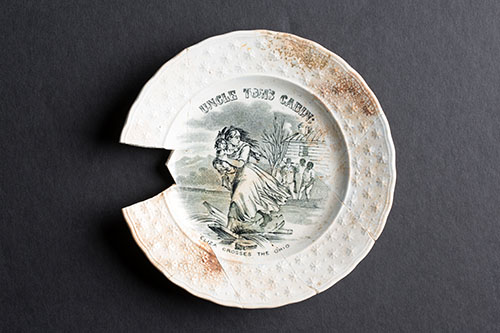Holly Martelle (principal at Timmins Martelle Heritage Consultants Inc.), London

Hopes for the future
My life as an archaeologist often consists of hour upon hour of painstaking analysis of small bits and pieces of everyday life. But last year, during an archaeological investigation in Toronto’s downtown, we made a remarkable discovery that not only got my archaeological heartbeat pumping, but renewed my sense of pride in what it means to be Canadian.
The find was a simple plate adorned with a scene from Uncle Tom’s Cabin – Harriet Beecher Stowe’s influential novel and depiction of slavery in America. In the first part of the 1800s, thousands of enslaved men, women and children fled the United States seeking freedom and headed for Canada, where slavery had been declared illegal. Many of them settled in the very neighbourhood that the plate would be found over 150 years later: St. John’s Ward. “The Ward” was Toronto’s first arrival community, a vibrant settlement of working-class folk from all over the world looking to plant roots in our great country and to make a better life for themselves and their families. Within this immigrant neighbourhood, the plate served as a celebration of the Canadian ideals of dignity and equality for all and their hopes for the future.
This story's themes
Photo Gallery
Most viewed themes


